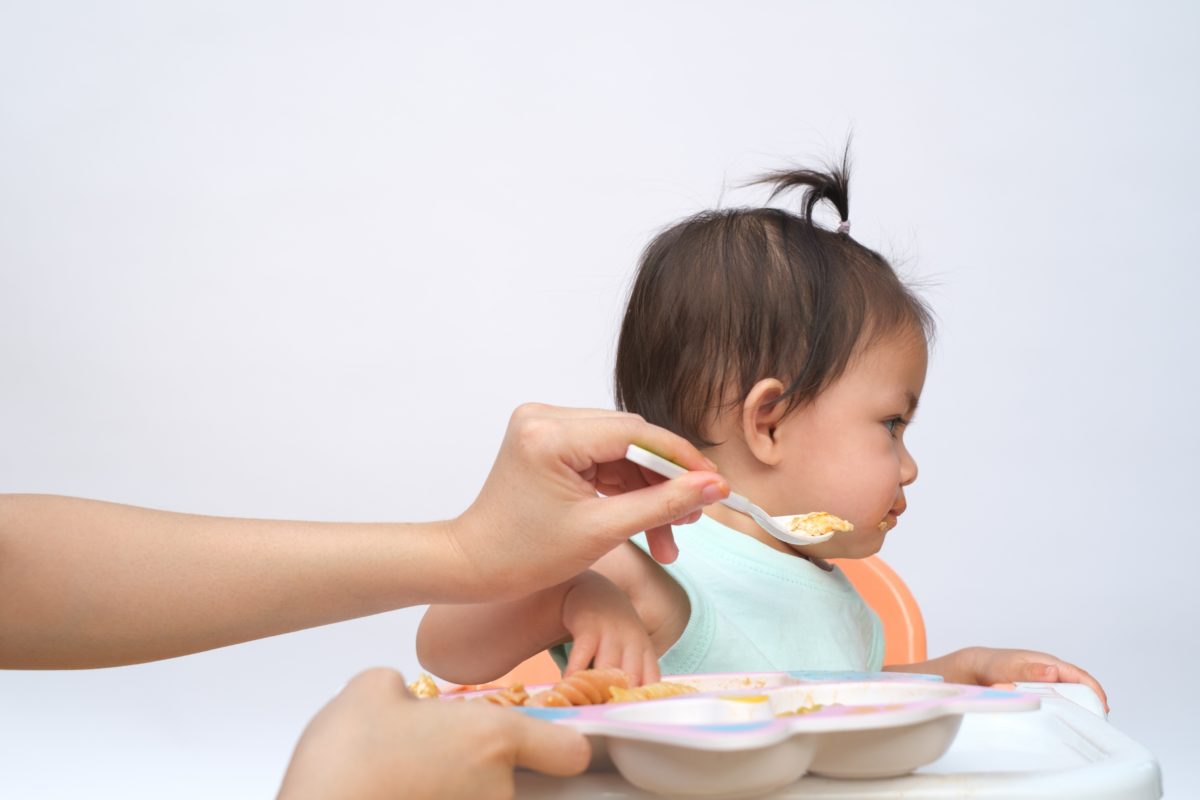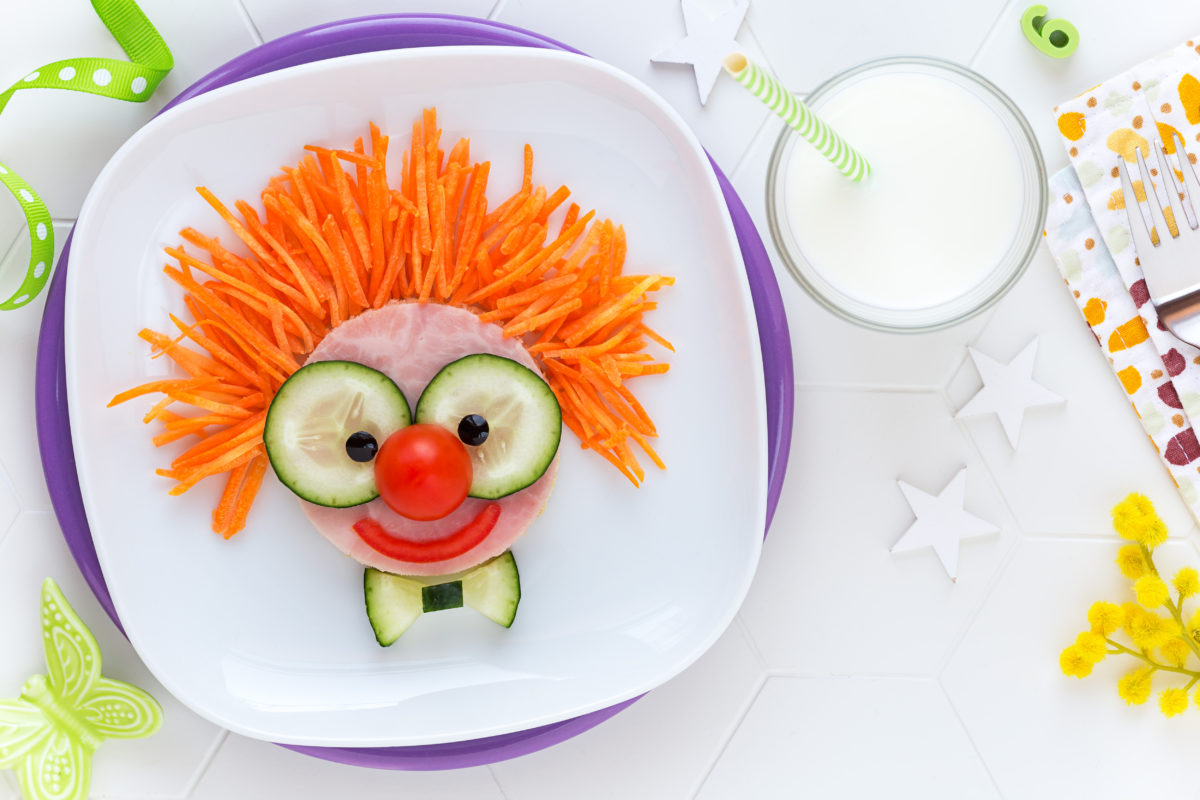It’s normal for children to be picky about what they eat, and there’s nothing wrong with having mealtime preferences, but there comes a time when being picky gets in the way of being happy and/or healthy.
For example, picky eating has been linked to diet restrictions and nutrient deficiencies, both of which can negatively impact a child’s physical, mental, behavioral, social, and emotional growth and development.
It also creates an unnecessary level of tension during mealtime, straining family relationships and leading to feelings of isolation and/or stress – not just between parents and children but also between siblings.
RELATED: Jessa Duggar Shares Her Helpful Tips for Dealing with Picky Eaters
At a certain point, parents need to step in.
Mealtime is supposed to be a positive and uplifting experience, yet most parents and children view it as a chore or nuisance – especially as the child grows older and their palate becomes more defined and strict.
If you’re finding yourself in a similar predicament, don’t panic – you’re not alone, and we’re here to help!
Why Are Some Kids More Picky Than Others?

We all know that some kids are pickier than others when it comes to food, but why are some kids more picky eaters than others? Now, that’s the million-dollar question every parent in the world wants an answer to.
Unfortunately, it’s a difficult question to answer – and every child is different.
With that said, most picky eating behaviors can be attributed to a combination of genetics, environment, early experiences, personal preferences, sensitivities, and an innate need for control and independence.
Genetics. Just as eye color, height, and predispositions to certain health conditions can be inherited, so too can sensitivity to tastes and textures – which can affect how open your child is to trying new foods.
Environment. The environments we create for our children significantly impact their openness to culinary diversity. For example, kids tend to be more open in a supportive and understanding environment.
Early Exposure. Introducing a broad spectrum of tastes and textures at an early age tends to result in a more adventurous palate, but limited exposure to foods can cultivate a comfort zone that’s hard to break.
Personal Preferences. We all have preferences when it comes to food. That said, it’s not always a matter of children not liking new foods but rather choosing to eat the same foods over and over again.
Sensitivities. Some children have heightened sensitivities to the texture or taste of certain foods, which can make them more selective about what they eat. This can be related to sensory processing issues.
Need for Control. Picky eating could be a way for children to assert independence and control over their environment. This is especially true during the toddler years when children start to seek more autonomy.
Understanding these factors helps parents adopt more empathetic and tailored approaches to nurturing healthy, flexible eating habits in young children – turning the dinner table into a place of discovery and joy.
How to Get Picky Eaters to Enjoy Mealtime

Every child is different, and no two palates are created equal. That’s why some kids eat whatever their parents put in front of them with no hesitation, while others only show an interest in certain types of foods.
If your child falls into that first category, you’re one of the lucky parents – and a lot of us envy you.
For those who have picky eaters at the table, you’re still lucky – you just need to be a little creative.
What’s most important is that you start early. One study, published in the journal Pediatrics, found that picky eaters tend to stay that way – if you don’t nip it in the bud early on, they might not grow out of it.
Don’t worry – we have some valuable tips that can help you get your picky eaters to enjoy mealtime again.
15. Division of Responsibility Model

The Satter Division of Responsibility in Feeding (sDOR), developed by registered dietitian and feeding expert Ellyn Satter, is an approach to pediatric nutrition that delineates clear roles for parents and kids.
Parents are responsible for the what, when, and where of feeding.
You not only choose what food is available, when they can eat it, and where it should be eaten, but you’re also responsible for making mealtime pleasant and teaching your child how to behave at the dinner table.
Children are responsible for how much they eat and whether they want to eat.
Your child should be expected to not only eat but eat enough, communicate what they enjoy and what they don’t enjoy, understand the importance of trying new foods, and follow the rules of the dinner table.
Separating responsibilities helps children learn self-regulation in eating, reduces power struggles at the dining table, and respects your child’s autonomy throughout their growth and developmental stage.
14. Set Realistic Expectations

Research in nutrition science indicates that children may need to be exposed to a new food up to 12 times before they start to accept or like it – and even then, they’re not guaranteed to accept or like it.
But that’s why early exposure is so important.
And when we say exposure, we mean any type of exposure. It doesn’t have to involve eating an entire serving, but even taking a bite of something – or even seeing it on someone else’s plate could count.
That’s why they say – if at first you don’t succeed, try, try again.
It’s unrealistic to expect your child to like everything – especially if they’ve never seen, smelt, or tried it before. Don’t put too much pressure on them, but try gradually introducing them to the food over time.
13. Picky Eating vs. Behavioral Issue

We’ve all been there before – dinner time rolls around, you just finished cooking the family meal, and suddenly, the calm of the evening is shattered by screams and tantrums erupting from the dining table.
Most of us might chalk it up to picky eating, but not so fast.
When these outbursts happen, we must recognize them for what they are – a behavior issue, not just a case of the picky eater. A call for help in managing emotions, not just protests against tonight’s menu.
And behavior issues need to be treated as behavior issues.
If we start treating behavior problems as picky eating problems, it’ll ruin the feeding experience for the child – creating a negative environment where kids are even more reluctant to give new foods a chance.
12. Get In the Habit of Eating as a Family

Eating meals as a family emphasizes the communal aspect of eating by shifting the focus away from the food and toward the shared experience. This helps create a more positive eating environment for kids.
But that’s the key – keeping things positive.
That means setting the devices aside and enjoying each other’s company while you eat. Talk about what happened at school that day, or what you want to do this weekend – make it a memorable experience.
It’s not just about eating – it’s about bonding.
Over time, your child will become more comfortable at the dinner table – and more open to trying new foods, especially when they see everyone else eating it too. It shows them you’re all in this together!
11. Gain Trust By Eating the Food Yourself

A 2022 study found that children were more likely to eat fruits and vegetables when their parents encouraged them to do so – and there’s no better way to do that than by eating along with them.
That way, they don’t feel like they’re doing it alone.
It’s easy to forget how much of an influence you have on your child’s everyday behaviors – and your eating patterns are no different. Your child will pick up on those behaviors just like anything else.
It’s like they always say – monkey see, monkey do.
And if you’re a picky eater yourself, you can use this as a good opportunity to climb out of your shell and share that journey with your child – creating a bonding moment unlike anything you’ve ever witnessed.
10. Introduce a Variety of Unique Foods

Introducing a variety of unique foods into a child’s diet from an early age plays a crucial role in preventing picky eating behaviors and developing a lifelong appreciation for a wide range of flavors and textures.
An appreciation that could blossom into a passion.
It can help your child become more adaptable, adventurous, balanced, comfortable, and sociable around food – which comes in handy at large gatherings, birthday parties, sleepovers, and school lunches.
But remember what we learned earlier – be patient.
They might not like it the first time around, but that doesn’t mean you should give up. Maybe wait a couple of days (or weeks) before introducing it again – they might be more open to it the second time around.
9. Don’t Offer the Same Food Two Days in a Row

Introducing your child to new foods is only half the battle. The other half is learning how to work those new foods into your daily and weekly rotation – and doing it in a way that keeps it fresh for your child.
Your goal is to not serve the same food two or three days in a row.
If you serve them their favorite foods too often, they may grow too attached to them and start to prefer them over new foods. At the same time, you don’t want to serve them their disliked foods too often, either.
The key is to find a healthy balance between new foods, favorite foods, and disliked foods.
Reintroducing previously refused foods in different contexts and alongside favored options and new choices can help kids gradually accept them without feeling pressured – they won’t know what hit them!
8. Give Them Quality Options to Choose From

To help give your child a sense of control over their meals, try giving them two to three options to choose from and letting them decide – as opposed to making that decision for them and forcing them to eat it.
You control what’s available, while they choose what to eat.
And if you know your child doesn’t like something but you’re not ready to give up on it yet, find a different way of introducing it. For example, if your kid doesn’t like spaghetti and meatballs, try something similar.
Maybe go for a pasta and Italian sausage day, instead.
When I was growing up, I couldn’t stand eating tacos out of a shell or wrap – but I loved putting my taco in a salad. It’s the same ingredients, and no extra preparation is needed – so it’s a win-win for everyone.
7. Offer Boring Substitutes

Growing up, my mother mapped out our meals every week so we knew what was being served on what day. We had two options: eat what was being served or choose one of the few substitutes available.
For us, the substitutes were a salad or a sandwich.
I rarely chose the substitute because they were never a more attractive option than the meal my mother made – and that was the point. The substitute was just a decoy to make the meal seem more appealing.
You want the substitute to be boring, but healthy.
With that said, there were some days when I chose the substitute. And when I did, it was my responsibility to make the salad or sandwich – again, another decoy to test how badly I wanted to skip the actual meal.
6. Avoid High-Calorie Drinks

What might appear to be a picky eater might be disguised as a child who fills up easily – and that could be the case for a child who drinks too much juice, soda, milk, or other high-calorie drinks during mealtime.
Believe it or not, these drinks can fill us up pretty quickly.
Limit your child to 4 ounces of juice and 24 ounces of milk per day – and especially limit their intake at the dining table. If they drink too much milk with their peanut butter and jelly, they might not finish the PG&J.
We like to call high-calorie drinks ‘empty calories.’
They might provide calories and make us feel full, but they don’t provide much nutrition and, in fact, reduce the nutrition we get from other sources. The body might get energy, but it won’t get much else.
5. Set Boundaries for Snacks

Snacking throughout the day is necessary, but parents need to be strategic about how much and when they let their child snack—we don’t want it to interfere with their breakfast, lunch, and/or dinner.
That’s why we recommend setting snack boundaries.
To encourage a more balanced eating pattern, only allow snacking midway between meals and always offer nutritious snack options, such as fruit, veggies, yogurt, or nuts – my favorite is carrots and celery.
Of course, portion size is important with snacks.
You don’t want the snack to ruin their appetite for the big meal – you just want it to provide the energy and nutrition needed to get them to the next meal. By the time that next meal comes, they should be hungry.
4. Make Mealtime Fun

Providing a more positive environment could help your child feel more comfortable at the dining room table. Especially during their younger years, it’s important to make mealtime fun, exciting, and joyful.
This is where you can let your creative side run loose.
Practice your food art, put together themed nights like Taco Tuesday, put together a buffet-style or salad bar dinner to make it more interactive, use fun tableware, and use mealtime as a moment to learn.
Make mealtime one of the highlights of your child’s day.
You’ll be surprised at how many new foods your child will try when you distract them with a good time – they’ll start trying (and liking) new foods without even realizing it. Now, that’s the best-case scenario!
3. Go Grocery Shopping Together

If you want to get your child interested in certain foods, why not bring them to the source? Going grocery shopping together can help expose them to new foods they’ve never seen, smelled, or tasted before.
Give them the freedom to pick things out.
Whether it’s picking out the fruit or vegetables they’ll eat later on, or letting them pick out something new they want to try. By committing to it in the store, they might be more motivated to try the food at home.
Grocery shopping trips can also be used as an educational tool.
You can teach them where food comes from, how it’s grown, and the nutritional benefits of different foods. Engaging in conversations about food increases their knowledge and appreciation for what they eat.
2. Involve Your Child in Meal Prep

Involving children in meal prep offers a hands-on, interactive way to address picky eaters. By turning the kitchen into a classroom, food becomes more than just something to eat – it becomes an experience.
And that experience helps them grow to be more open to trying new things.
When children touch, smell, and help prepare different ingredients, they become more familiar with them. This helps reduce anxiety and skepticism about new foods while giving them a sense of ownership over it.
Don’t worry – you can start this at any age.
Give your child age-appropriate tasks, teach them basic cooking skills, explain how ingredients come together, and discuss the nutritional value of foods as you prepare them – there’s so much to learn!
1. Combine New Foods With Familiar Favorites

If you’re introducing your child to a food for the first time or trying to get them to like a food they’ve refused in the past, try combining that food with one of their all-time favorites – either as a side dish or appetizer.
This can make them feel a little more comfortable about trying it.
When new foods are consistently introduced in a positive context, such as alongside beloved dishes, children begin to build positive associations with trying new things – and they might find new favorites!
For best results, start with foods that are similar in taste, texture, or appearance.
And ease your way into it. Start with a small portion of the new food and gradually increase that portion as they grow more accustomed to it. This works well if you’re trying to replace one food with another food.
Picky Eaters Don’t Need to Be Punished – They Need to Be Understood

Behind every cautious bite or refused plate is a child who is slowly learning what this world has in store for them. With so much to try, it’s unrealistic to expect them to enjoy everything you put in front of them.
But there’s a difference between having a preference and being picky.
Moreover, there’s a difference between being picky and being harmful to the body.
When your child starts to transition from being picky to being unhealthy, do your best to avoid punishment – after all, they don’t know any better. Instead, we must shift from a mindset of correction to one of curiosity and support, fostering an environment where children feel safe to explore food at their own pace.
You’re not just expanding your kid’s palate – you’re promoting a healthy, lifelong relationship with food. It might take some time, energy, and effort, but it’s necessary for your child’s growth and development.
YOU MAY ALSO LIKE: Easy Smoothie Recipes You and Your Kid Will LOVE
Now that we’ve shared our tips and tricks for dealing with picky eaters, we want to hear from you! If you’d like to share some of your own success (or failure) stories, you can join the conversation by heading over to our online MamasUncut community, where mothers and parents can learn – and grow – together.
Contents
- 1 Why Are Some Kids More Picky Than Others?
- 2 How to Get Picky Eaters to Enjoy Mealtime
- 2.1 15. Division of Responsibility Model
- 2.2 14. Set Realistic Expectations
- 2.3 13. Picky Eating vs. Behavioral Issue
- 2.4 12. Get In the Habit of Eating as a Family
- 2.5 11. Gain Trust By Eating the Food Yourself
- 2.6 10. Introduce a Variety of Unique Foods
- 2.7 9. Don’t Offer the Same Food Two Days in a Row
- 2.8 8. Give Them Quality Options to Choose From
- 2.9 7. Offer Boring Substitutes
- 2.10 6. Avoid High-Calorie Drinks
- 2.11 5. Set Boundaries for Snacks
- 2.12 4. Make Mealtime Fun
- 2.13 3. Go Grocery Shopping Together
- 2.14 2. Involve Your Child in Meal Prep
- 2.15 1. Combine New Foods With Familiar Favorites
- 3 Picky Eaters Don’t Need to Be Punished – They Need to Be Understood
Mamas Uncut is THE online place for moms. We cover the latest about motherhood, parenting, and entertainment as well – all with a mom-focused twist. So if you're looking for parenting advice from real parents, we have plenty of it, all for moms from moms, and also experts. Because, at the end of the day, our mission is focused solely on empowering moms and moms-to-be with the knowledge and answers they’re looking for in one safe space.
